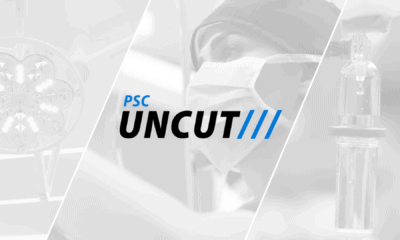Plastic surgeons are united in their excitement for modern breast augmentation. Technology and research have combined to offer the widest range of implant options than ever before, leading modern breast augmentation patients to have the most custom and tailored procedure to their unique situation.
If there are any problems, it’s now which implant to use? Before, things were pretty straightforward since the options weren’t many. Now with so many, the consultation becomes even more important for patients as their surgeon walks them through a very nuanced explanation of options. Breast augmentation veterans Dr. Kevin Smith and Dr. Brooke Seckel discuss the latest implant options and how they utilize them to achieve the most natural-looking results yet.
Shaped vs. Round Implants
The choices for implants starts with shape: either a shaped implant that looks like a teardrop or the classic round implant. While it may seem as simple as deciding on the aesthetic look, the shaped vs. round discussion has more to do with what a unique patient requires rather than what they’d like. Some patients a shaped implant might actually work better, even if the surgeon prefers to use round. Either way, invoking shaped implants involved texture, a hotly debated aspect of modern implants that some avoid.
“When it comes down to implant choice, the huge difference is in terms of whether you’re going to use shaped implants or not,” explains Dr. Seckel, a board certified plastic surgeon in Boston. “The minute you decide you’re going to prefer shaped implants, you’re talking about textured. That issue doesn’t exist with round implants. Most round implants are smooth. If you’re concerned about texturing, you have a choice – which is to go with round, smooth implants.”
A textured implant refers to the texturing present on shaped implants (it’s also available on a select few round implants). Since shaped implants need to stay put and not move, texturing helps to make them “stick.” In theory this sounds great, and many surgeons find textured, shaped implants in the right cases to be ideal. Some recent studies involving Breast Implant-Related ALCL show that textured implants may increase the risk, although many surgeons believe that the risks are so low anyway that blaming textured implants is a bit premature. Still, there is a “black mark” surfacing on textured implants, and may sway patients in their decision making.
Even without texture, modern silicone round implants do such a great job of adapting once placed that surgeons feel a secured teardrop shape via shaped implants isn’t necessary. “In my experience, round, smooth implants adapt once they’re in the body and under the muscle,” says Dr. Seckel. “And they do assume a teardrop shape. For me, it’s not a matter of whether shaped is better than round, it’s a matter of I prefer a smooth implant over a textured implant.”
Beyond Shaped vs. Round – Cohesivity
The shaped vs. round and textured vs. smooth has opened up the doors to more nuanced and tailored breast augmentation procedures. And even more recent advance has really allowed surgeons to custom-craft a breast augmentation to a patient with some high degree of precision: the cohesivity of implants. Cohesivity refers to “how stiff” the silicone fill is inside implants, which allows surgeons to craft an even high resolution of three dimensional augmentation. While surgeons may have a personal preference of shaped or round, the choice of cohesivity is made per the requests and needs of patients.
“I think that there’s a place for all of these implants and it really depends on what we have to work with and what the patient wants to accomplish, ” shares Dr. Smith, a board certified plastic surgeon in Charlotte. “I agree that a standing breast is a beautiful teardrop, but when you lay down it pancakes and becomes flat. I think a more natural breast is one that is round at times and teardropped at other times. I think that because industry has given us implants with different levels of cohesivity, or stiffness of the filler, that allows us to better address the nuances of shape.”
Helping Patients Understand Modern Implant Technology
For decades, silicone gel implants have received an immense amount of attention and debate. Because of this, silicone gel implants are one of the most extensively researched medical devices in history. In particular, the potential harmful effects of silicone was oversold in the 1990’s, leading to a hysteria that still has patients questioning whether or not having silicone in their body is a wise decision. Surgeons sometimes have a lot of information for patients to parse in terms of selecting implants, but it usually has to begin by readdressing silicone.
“I think one other thing is, we have knowledge, have studied the literature and know all about these implants, and we tend to forget that the patients are still back in 1990 when silicone is a red flag word,” explains Dr. Seckel. “They come into your office, ‘Yeah, I’d like to have gel implants but I’m afraid to have silicone in my body.’ Being able to show them a photograph of a cohesive gel implant cut in half and it doesn’t move really makes them comfortable.”
If a patient is considering breast augmentation, it’s clear that there is no better time than now in the history of the procedure. Not only have implants been expanded on and honed, but the surgical procedures and techniques have likewise been improved. Many surgeons offer breast augmentation surgery with a 24 hour recovery, meaning patients are literally out to dinner the night of their surgery and nearly ready to reenter most of normal life the following day. The consultation has grown more complex and more personal, leading surgeons to help their patients find a selection of implants for their unique needs, not an assembly line procedure.










Facebook
Twitter
Instagram
YouTube
RSS